Historical landmarks - village relics
Quinburg
This Gothic castle ruin from the 13th century or the end of the 14th century is situated 5 kilometres to the south of Heřmanovice on a rock of Sokolí Skály (Eagle's Rocks) above the Černá Opava Valley. No written record has been preserved.
The core of the castle lies on three independent rocks, on which rubble remnants have been preserved. The west side of the castle was separated from the slightly rising crest by an artificially made offset changing into an 18 metres wide ditch. Archaeological objects are kept in museum of Bruntál and they are represented mostly by ceramic and stony artifacts.
Drakov
Remnants of this fortification can be found 3 kilometres southwest from the village, on the left bank of Černá Opava, approximately 500 km from forester's house Drakov. The place is situated on a woody rock, which is 23 metres long, 8 metres wide and 10 metres high. We can recognise an old road between the rock and the river. Little masonry remnants and a little layer of coal tell us that the fortification was destroyed by fire and they suggest that wood was used as a building material. As well as Quinburg, Drakov was guarding the road from Nisa to Olomouc running through the valley of Černá Opava. This road is believed to have existed in the 14th century.
The former office of the reeve
This indistinctive storeyed renaissance building of an uncertain age, standing in the centre of the village, was a residence of hereditary reeves. Renaissance arches and heraldic brass have been preserved in one of the rooms on the ground floor. On the brass we can see eblazonry of the polish King Vladislav Zikmund, and of Karel - Swedish and Austrian prince and at that time administrator of the great master Thumbs in Prussia. The lower part of the brass tells us in the German language that both of the princes stayed in the house on 14th June 1624 and permitted the eblazonry to be done as a memory of their stay considering the faithful service of Mr Jonáš Biroldt, a collector of the dominion of Zlaté Hory.
Anno 1624, den 14. tag des Monats Juny seindt hochge…
beide Fyrsten, alhier Zur Hermstadt in diesem Haus vber nacht
gelegen vnd Herren JONAE Biroldt, COLLECTORIim Zuckh
mentelischen Ambte, Zue einer gedechtnüs obgemelte Wappen,
in an sehung seiner bestendigen treuen vordienst,
an solches hauss genedigiist vorehren lassen.
Parochial church of St Andrew

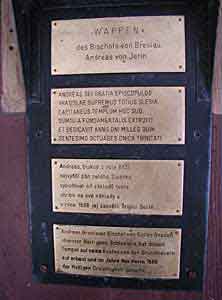
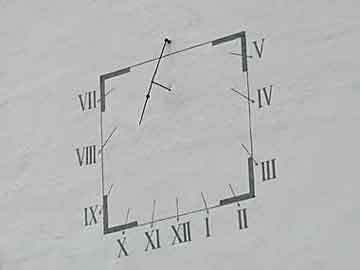
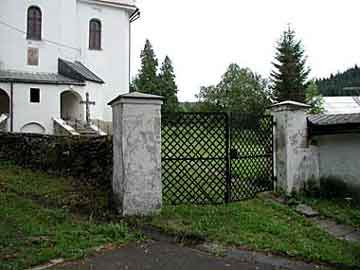
It stands in the middle of the village and it is surrounded by a wall
with an original gate, which surrounds the former cemetery. Renaissance
church was built in 1588 by Ondřej Jerin, the bishop of Vratislav, and
it was dedicated to St Andrew according to the bishop's Christian name.
Only the lower part of the spire with a marble brass remains. On the brass
we can see the bishop's blazon and an epigraph below:
ANDREAS DEI GRATIA EPISCOPULOS
VRATISLAE SUPREMUS TOTIUS SLESIA
CAPITANEUS TEMPLUM HOC SUO
SUMTU A FUNDAMENTALIS EXTRUXIT
ET DEDICAVIT ANNO DNI MILLES.
QUIN GENTESIMO OCTUAGES DNICA TRINITATI
Andreas, by God's will the bishop
The overlord off all Silesia
who built afresh this new temple
at his own expense and
dedicated it to the Holy Trinity in 1588
The church was rebuilt in baroque style in 1739, it was enlarged by the bishop Philipp Ludwig Sinzendorf and newly dedicated in 1766. It is an oblong building with one nave and with rectangular ground plan, a side chapel, vestry, sacraria on the upper floor, a sanctuary and a musical choir loft at the west side. The nave is vaulted with Prussian arches touching smaller abutments with Roman butt-ends and supported by pilasters with Ionic chapiters. In the western axes of the facade a prismatic spire projects. The facade was damaged during the reconstruction in 1990. The equipment of the church includes: the picture of St Andrew’s death placed in the middle of the pillar retable (before 1766) of the main altar. Monumental sculptures of St. Philip, Peter, Paul and James are at the foot of the columns. There is a sculpture of Holy Trinity with adorers and little angels, two side altars with pictures of St. Barbara and Anna, a pulpit with a staircase, a figural epitaph of an unknown aristocrat (†1613) and altar candles. The church is also equipped with a late renaissance font with a baroque cover on a stone pedestal with a round scape decorated with an ornament surrounded by three telamons, who carry a polygonal basin. It is decorated with toned reliefs depicting St Andrew and scenes from the life of Christ.
Chapel St Jeroným
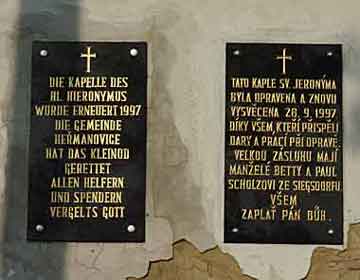
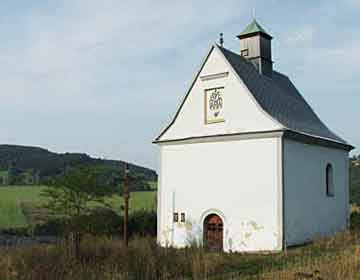
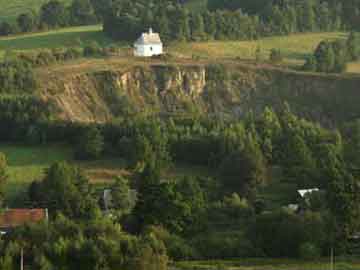
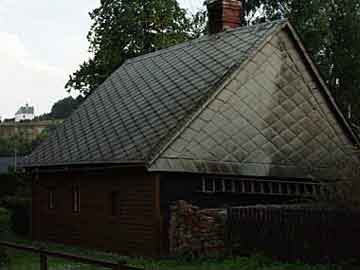
This architectonically simple chapel of an uncertain age is situated above the quarry. It was newly dedicated on 28th September 1997.
Sculpture of St. Jan Nepomucký
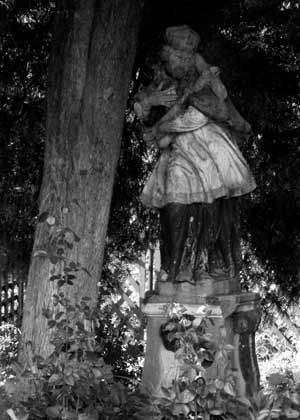
Stands opposite the house no. 10 and it represents another sacral monument of the village. This sandstone polychrome statue of the saint in his traditional clothes and with a cross in his arms is placed on a square pedestal decorated by shells and volute figures with an epitaph 1778 HBC.
Blast furnace Drakov
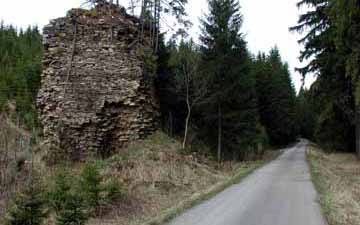
the remnants of an old wooden and coal furnace from 1807 and working till 1830s. It is a prismatic stony construction of size 15 times 8 metres with a vaulted top. The remnants of a flume are opposite.
Folk Architecture
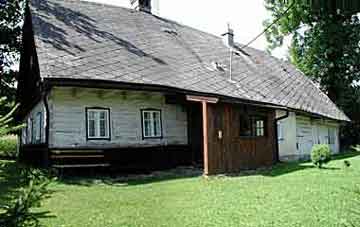

On 24th of May 1995, Heřmanovice was proclaimed by a government act to be a sights reservation for its uniquely preserved set of folk architecture. The protected houses are typical local houses of Jeseníky. They are one-floor timbered houses with saddleback shingle roofs, (which were replaced in the middle of the 19th century by slate roof and later by asbestine-cement and tin roof) with a considerable descent and a stone socle. The ground plan is a chamber-stable type and it is composed of a large house-place, a chambre, a hall with a seldom preserved kitchen, second chamber and a stable, which is usually made of bricks. The houses usually stand in the north-south direction, they have wooden gables with slatted gaps and two small windows and an elevated loft. There are usually three wooden-framed windows, walls are limed and the main entrance leads into the hall by a door from the side of the house. The garden was enclosed with a stone wall or a fence and with a dead fence from the 20th century.
The following houses are included in the Central List of Real-estate Cultural Relics: the houses numbers 9, 106, 181, 185, 189, 203, 256, 290, 295, 302, 309, 320, 350, 370.
The remnants of ore mining in the range of Zlaté Hory are also protected. They are:
Mine Žebračka
his complex of refuse dumps, drifts and stacks is situated on the eastern slope of Příčný vrch near the highway to Zlaté Hory. Recently a mining chamber caved in and created a dip with dimensions of 60*30*50 metres.
Mine Karel
this medieval workings is situated in the centre of the Hackelsberg range in the cadastre area of Heřmanovice and Horní Udolí on the plateau of Příčný vrch. It consists of a drift 60 metres long, a manually dug stack 40 metres long and two dead-end stacks equipped with a wooden pipe.
